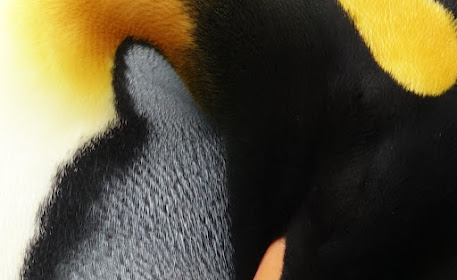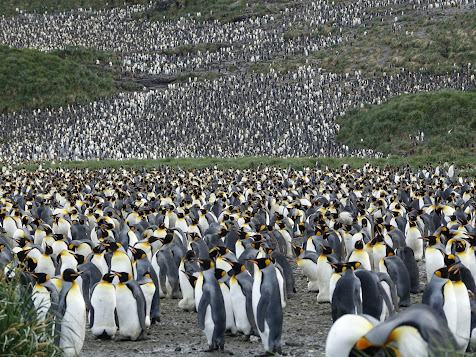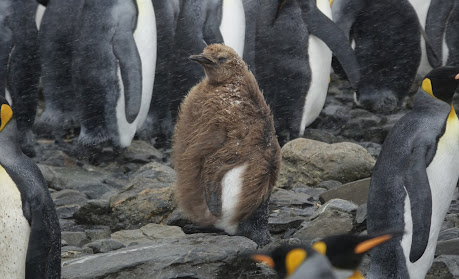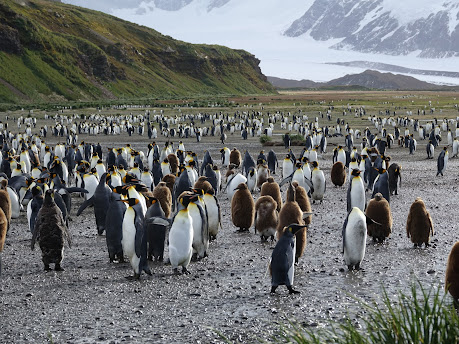The Kings were nesting in wide, flat plains created by retreating glaciers, lying within sheltered bays. Many adults were on eggs; others were huddling by freshwater to moult, whilst within the colony ranksof fat brown yearlings were waiting patiently to grow their adult feathers and to be fed by a returning parent. The sights, sounds and smells of one of these huge colonies overloads the senses and after my first visit, I had to have a lie down to decompress! What a privilege to see these amazing birds. Here are a few pics.
The bill stripe on King Penguins is very pale in young birds and either orange or pink in adults, sometimes with violet-blue at the end. Some birds seemed to have yellow prunescence on the black crown and throat feathers often with a bright pink bill, so I wondered if these birds were at peak breeding condition.
It was interesting to see both the incubating adults amid the brown fluffy chicks, as I hadn't realised the King's breeding cycle lasts up to 16 months and hence both eggs and old chicks can be seen in the colony simultaneously. This means that pairs rear two chicks every three years. Below is an incubating adult with the egg carefully concealed under the fold at the bottom of the belly, whilst it is propped on the feet. Incubating groups often stood together, backs to the snow and wind. The egg is incubated by both parents and takes 54 days to hatch!
And the chicks...
A few more shots to finish...

















No comments:
Post a Comment